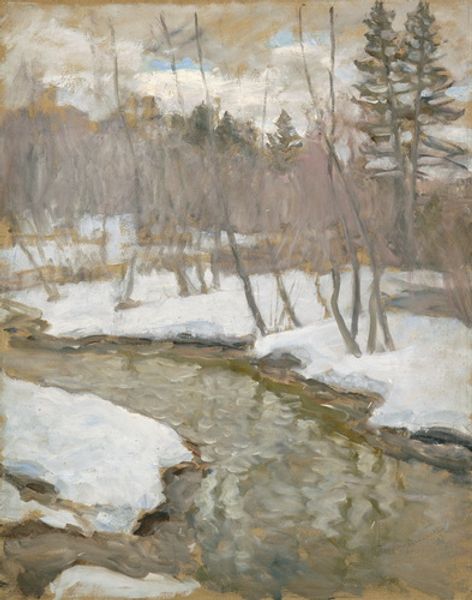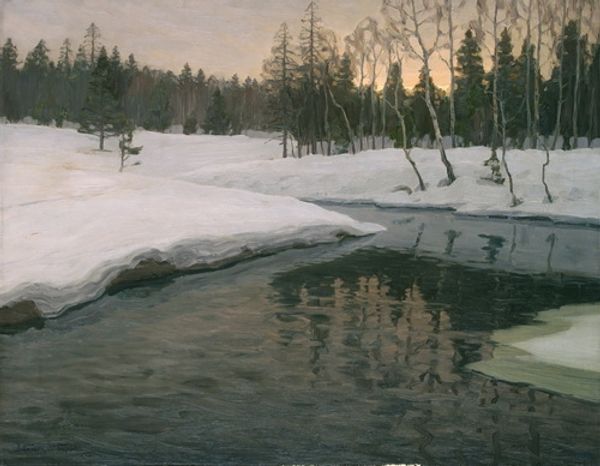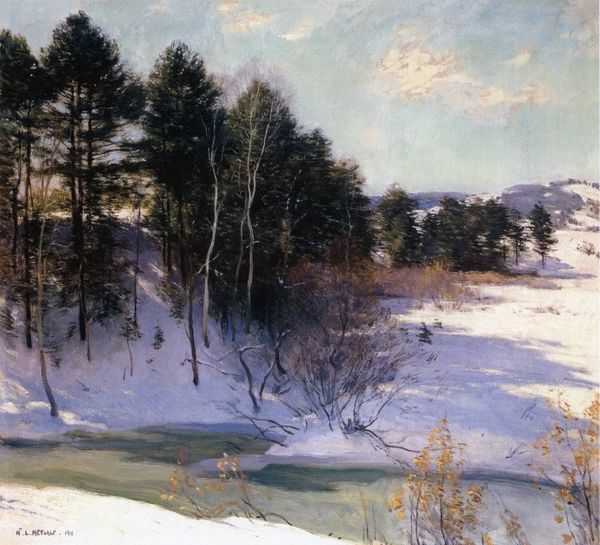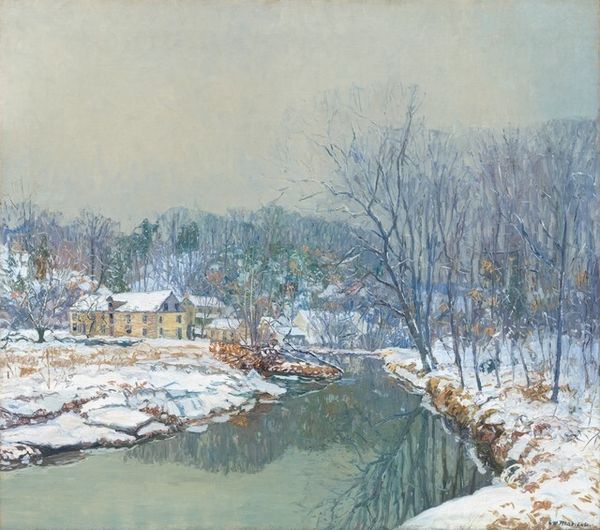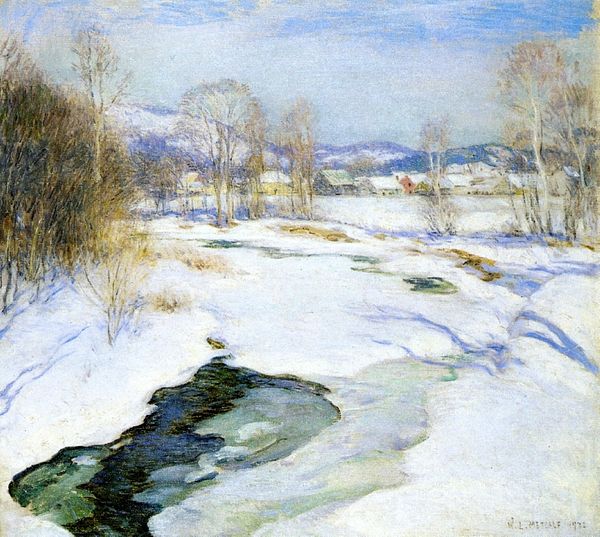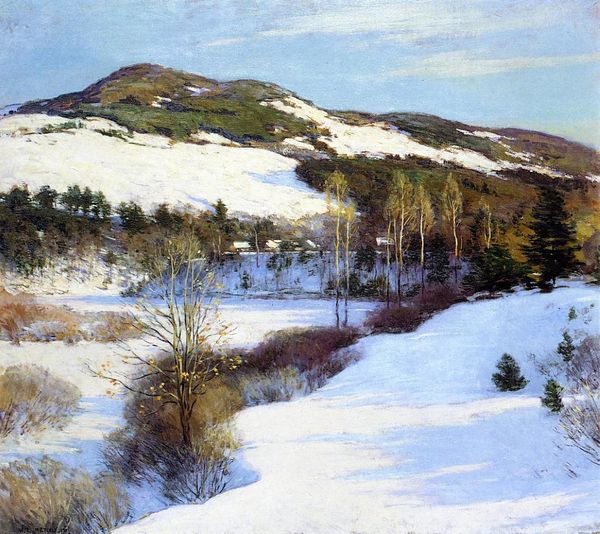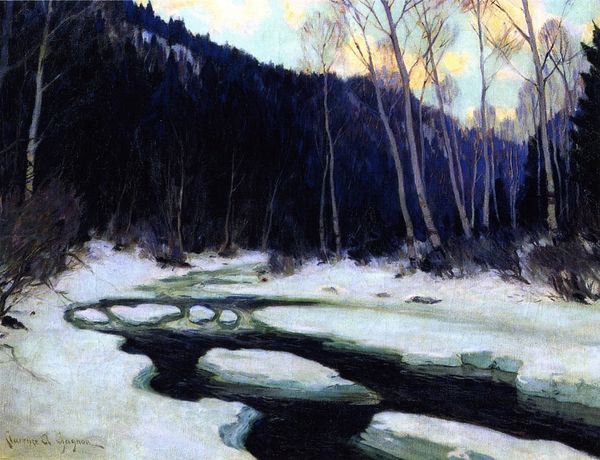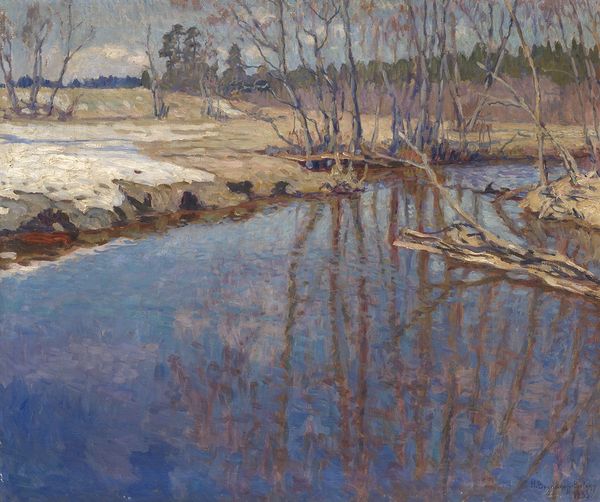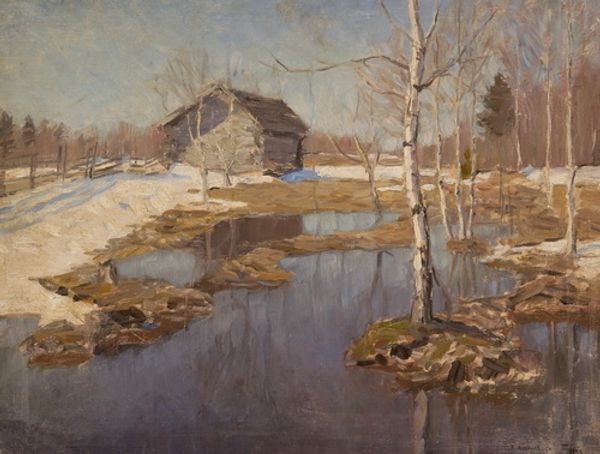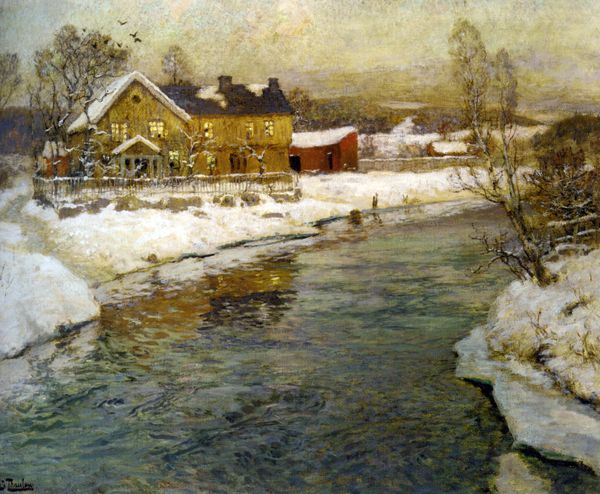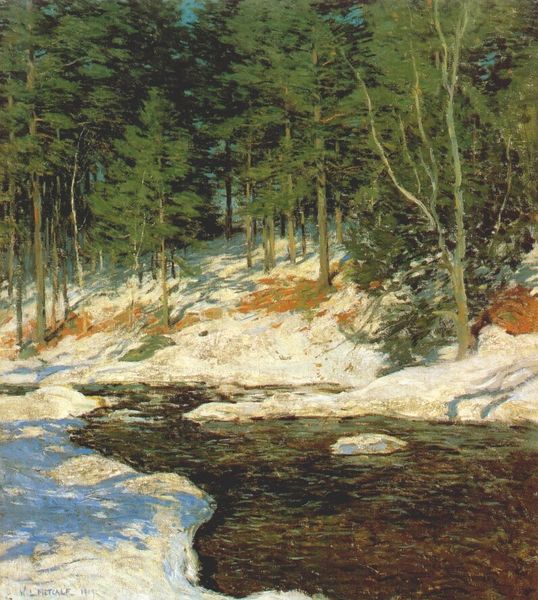
Dimensions: 66.04 x 73.66 cm
Copyright: Public domain
Editor: We're looking at "The Frozen Pool, March," an oil on canvas painted by Willard Metcalf in 1909. It gives off a certain stillness; the muted colors are so evocative. What stands out to you, in particular? Curator: Well, let's consider Metcalf's methods. Oil paint, obviously industrially produced even in 1909, allowed for the slow, deliberate layering we see here. The 'alla prima' or wet-on-wet technique evident, which speaks to both efficiency and a deliberate embrace of visible brushstrokes. This suggests an engagement with the marketplace as well as aesthetic choices: How does this approach balance the desire for artistic expression with the economic realities of production? Editor: That's an interesting perspective. I was focusing more on the light and how it interacts with the snow, but I see your point about the production and material conditions affecting the art. Curator: Exactly. The material isn’t just *there*; it dictates, to some extent, what can *be* there. Metcalf chose readily available pigments. The surface is subtly textured. And how would his social standing play into choices of materials, his leisure time for 'en plein air' painting, and ultimately the distribution and reception of his work? Editor: So, beyond just seeing a pretty winter scene, we can read into the entire production process, from paint to marketing. Did Metcalf's impressionistic style affect his economic prospects? Curator: Undoubtedly. Impressionism was becoming marketable, yet still maintained a veneer of artistic "integrity." By aligning himself with this style, Metcalf was likely appealing to a specific consumer base – a rising middle class eager to acquire symbols of culture and refinement. He both fulfills and perpetuates material and social systems. Editor: I've certainly never considered Impressionism from this angle before. Thank you for shining a light on those often-overlooked connections! Curator: Likewise, you’ve pushed me to think about the immediate impact of light on the scene; that element of the art remains primary!
Comments
No comments
Be the first to comment and join the conversation on the ultimate creative platform.
